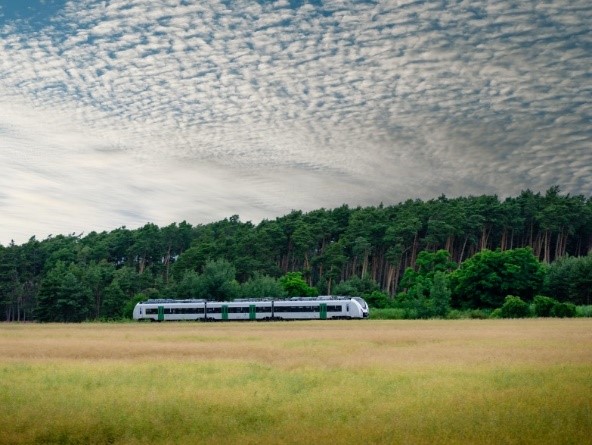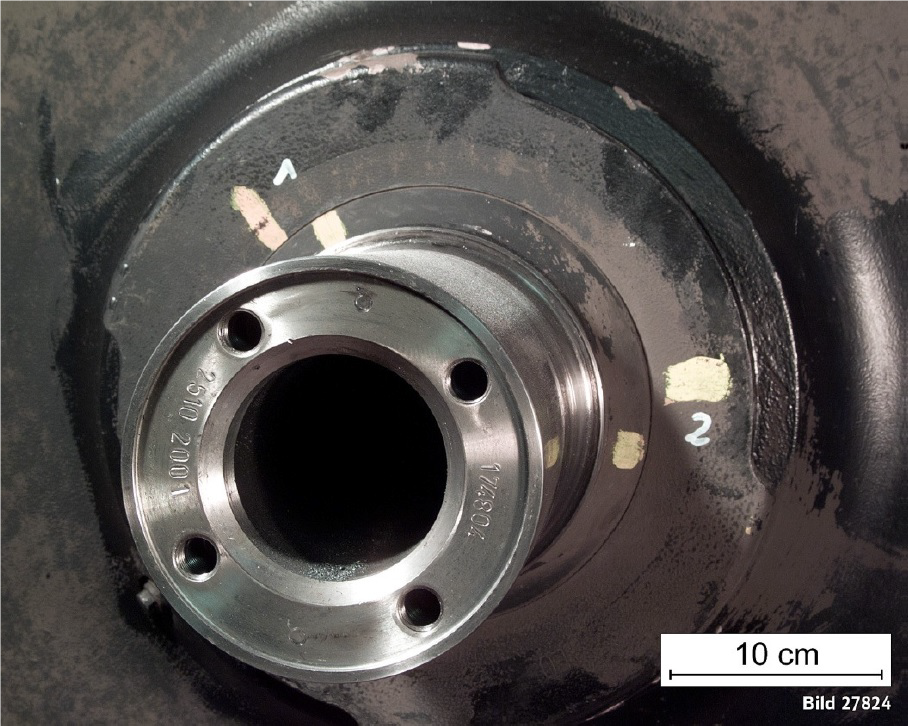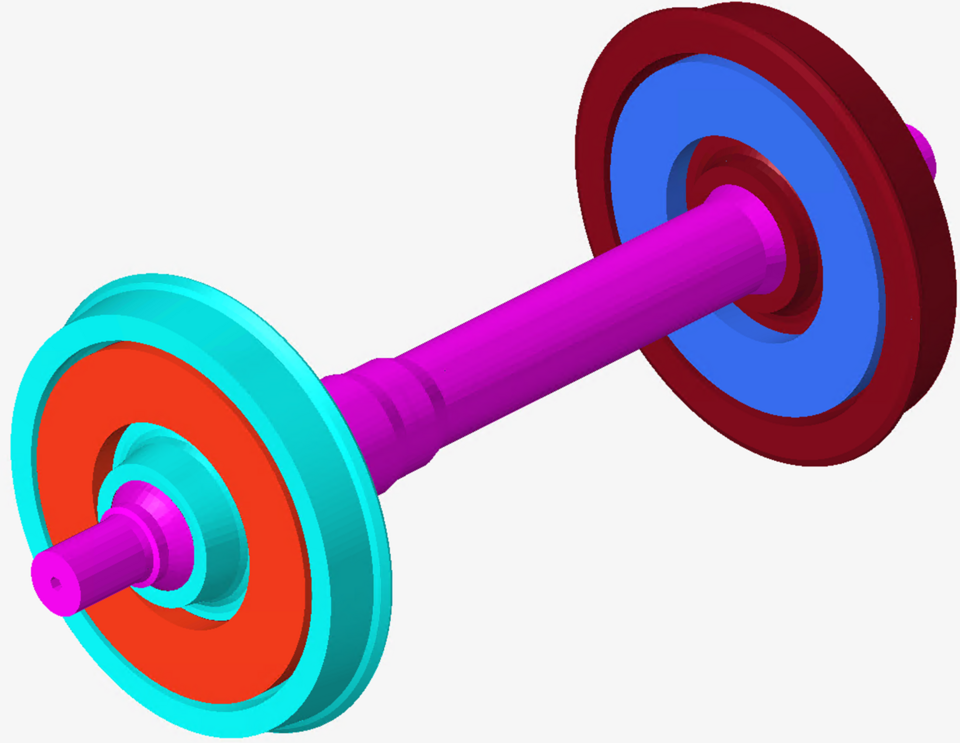During the operation of rail vehicles, self-excited torsional vibrations can occur on the wheel sets under certain circumstances. In extreme cases, the resulting dynamic torsional moments lead to failure of the interference fit and thus to rotation of the wheel on the wheelset shaft.


This could result in a displacement of the wheel on the wheel set shaft, accompanied by a change in the track dimension of the wheel set. In order to ensure the safe operation of rail vehicles, the legislator stipulates that a separate proof of strength of the wheel sets must be provided for approval, taking into account self-excited torsional vibrations. This is currently only possible by means of time-consuming measurements. This results in two major problems. Firstly, the test conditions that favor the occurrence of torsional vibrations are not known, which means that torsional vibrations tend to occur randomly and cannot be specifically induced. Secondly, the measurements can only be carried out at a late stage of tensile development. This means that if the strength verification fails, the necessary revision of the wheel set is only possible at enormous cost.
A supplement to verification by means of measurements on the vehicle is a calculation based on suitable models. One challenge in the development of suitable simulation models is to adequately model the wheel-rail contact and the influence of the motor Control under environmental uncertainties (e.g. weather, condition of the rail).


This is where this project comes in, the core objective of which is to develop a simulation model for predicting self-excited torsional vibrations. The various uncertainties are to be incorporated using standard uncertainty quantification methods (e.g. surrogate modeling, Monte Carlo, Bayesian methods). On the one hand, this is intended to minimize the risk in the design of the wheel sets with regard to strength and press fit and, on the other hand, to show under which test conditions self-excited torsional vibrations occur more frequently.
References:
Vacancies of TU Braunschweig
Career Service' Job Exchange
Merchandising
Term Dates
Courses
Degree Programmes
Information for Freshman
TUCard
Technische Universität Braunschweig
Universitätsplatz 2
38106 Braunschweig
P. O. Box: 38092 Braunschweig
GERMANY
Phone: +49 (0) 531 391-0
